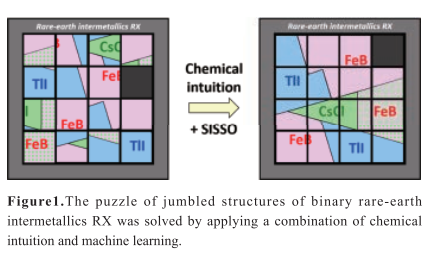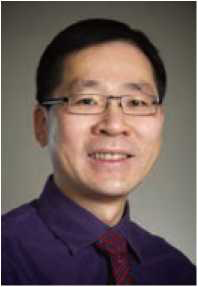Arthur Mar
1 Department of Chemistry, University of Alberta, Edmonton, Alberta T6G 2G2, Canada
EXTENDED ABSTRACT: Machine learning algorithms have been applied successfully in many areas of materials chemistry. An ongoing challenge is make accurate predictions of the crystal structures of inorganic solids, their site preferences, and their physical properties [1]. We have previously developed machine learning models to predict structures within the large family of intermetallic compounds known as Heusler compounds (used as thermoelectric materials, ferromagnets, magnetocaloric materials, and catalysts), followed by experimental validation [2]. Nevertheless, skeptics rightfully criticize many of these models as being too "black box," with little chemical insight and explainability. We
demonstrate our efforts to generate more interpretable machine learning models, using the structures of binary rare-earth intermetallics RX as an example, to illustrate that it is possible to gain insight and practical guidance to prepare new materials.

Keywords: interpretability; crystal structure; intermetallic phases; rare earths; polymorphism
REFERENCES
[1] A. O. Oliynyk and A. Mar, Acc. Chem. Res. 51 (2018) 5968.
⑵ A. S. Gzyl, A. O. Oliynyk and A. Mar, Cryst. Growth Des. 20 (2020) 64696477.

Dr. Arthur Mar received a Ph.D. from Northwestern University and worked as an NSERC Postdoctoral Fellow at the Institut des Materiaux de Nantes. He is a full Professor in the Department of Chemistry at the University of Alberta. He is interested in inorganic solid state chemistry, including synthesis (intermetallics, Zintl phases, pnictides, chalcogenides), characterization (X-ray diffraction, XPS, physical properties), applications (magnetic, thermoelectric, superconducting, optical materials), and machine-learning approaches to materials discovery. He has served on the editorial boards of Chemistry of Materials, Journal of Solid State Chemistry, and Acta Crystallographica. He is vice-chair (2022) and chair-elect (2024) fbr the Gordon Research Conference in Solid State Chemistry.